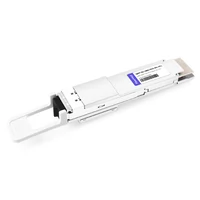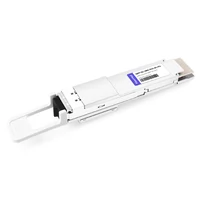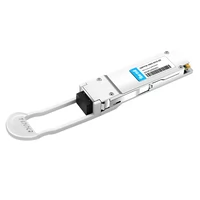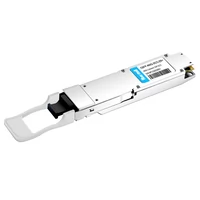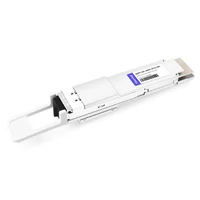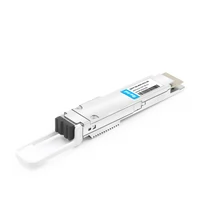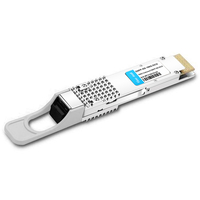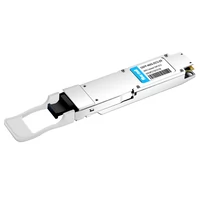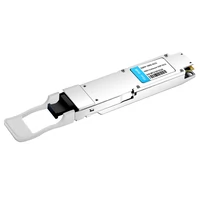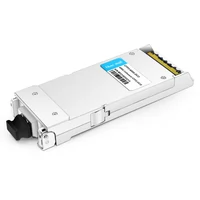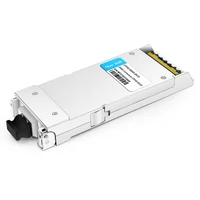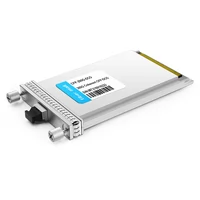In modern telecommunications, things are changing very fast. Some of the most important inventions in this field are coherent optical transceivers, which help achieve high data transmission speeds and improved network efficiency. In order to increase the capacity and reach of these systems, these devices use advanced modulation formats together with coherent detection principles. The world is experiencing an enormous need for information fueled by connected devices and applications that use a lot of bandwidth; therefore, people should know how coherent optical works. This paper covers basic concepts behind coherent optical transceivers, their operational mechanisms, and their transformative effect on current and future network architectures. Our goal here is to look at them within a wider optical networking context and to point out why they are important for unlocking the generation of highly performing scalable network solutions.
Table of Contents
ToggleWhat are Coherent Optical Transceivers and How Do They Work?
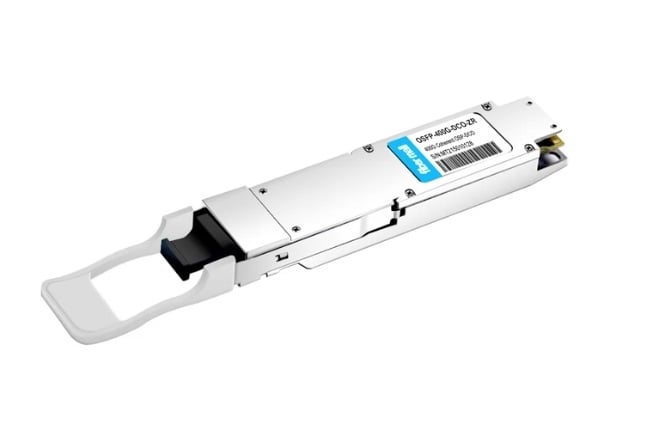
Understanding Coherent Optics Technology
Coherent optical technology depends on coherent detection, which is the measurement of both the amplitude and phase of an optical signal. Unlike traditional direct detection methods, coherent detection permits more advanced modulation formats like Quadrature Amplitude Modulation (QAM) that encode multiple bits per symbol and thus greatly increase data bandwidth. A laser source, modulator, coherent receiver with a local oscillator laser, and digital signal processors (DSPs) are among the essential components of a coherent optical transceiver. The modulator puts information onto the lightwave while the incoming signal mixes with it at this point where, after mixing, an intermediate frequency is generated that can be digitized for processing by DSPs to extract transmitted data. Therefore, coherent optical transceivers allow for higher spectral efficiency, longer transmission distances as well and better protection against signal impairments, which makes them necessary in modern high-capacity networks.
The Role of Transceivers in Optical Communication Products
In optical communication products, coherent optical transceivers are very important because they improve the ability to transmit data over long distances. They allow better modulation methods to be used, which achieve higher spectral efficiency and wider bandwidth per frequency. Hence, they can be utilized in data centers with high capacity or for long-haul networks. Furthermore, these devices enhance link performance by making them less sensitive to noise and other disturbances of a signal while ensuring that transferred data remains reliable as well as of good quality. Another significant feature is their compatibility with flexible grid systems and increased baud rates which makes them valuable tools during transformation stages towards more flexible or scalable network architectures.
Key Differences Between Coherent and Non-Coherent Transceivers
Coherent transceivers and non-coherent transceivers vary a lot in their working principles and application areas. For example, coherent transceivers employ phase information and polarization multiplexing among other advanced methods, hence achieving higher spectral efficiency, longer reach, and more resistance to noise and signal impairments, among other things, which makes them suitable for long-haul or high-capacity networks; they utilize digital signal processing (DSP) technology for managing complex modulation formats like QPSK and QAM.
On the other hand, non-coherent transceivers such as intensity modulation with direct detection (IMDD) are simpler than their counterparts because these types do not need expensive equipment used in coherent systems. They are used over short distances where advanced modulation or high spectral efficiency is not typically required. At low speeds only but also over long distances, it is susceptible to linear or nonlinear impairments that may degrade signal quality significantly if any arise whatsoever.
In summary, depending on the needs of a particular network with regard to distance coverage, data rate requirements, and cost-effectiveness, among others — one can either opt for coherence or lack thereof.
What are the Applications of Coherent Optical Transceivers in Modern Networks?
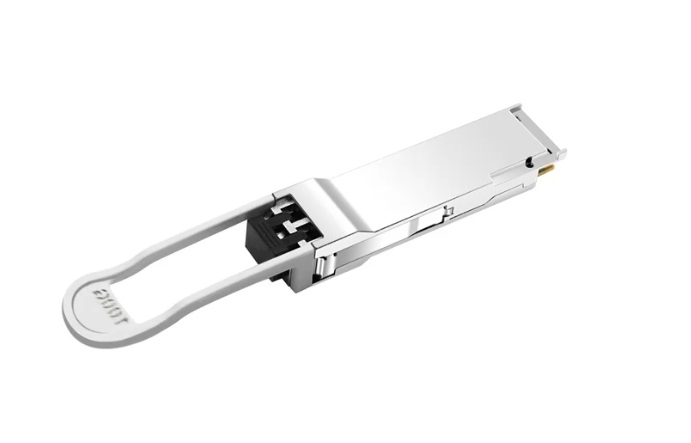
The Importance of Coherent Transceivers in DWDM Networks
The key reason for the importance of coherent transceivers in densely populated wavelength division multiplexing (DWDM) networks is that they can greatly increase bandwidth and spectral efficiency. The ability to support high data rates over long distances using phase modulation and advanced signal processing technologies makes these devices indispensable in modern high-capacity networks. They also have the advantage of minimizing chromatic dispersion and polarization mode dispersion, which are typical problems encountered in optical fiber communication systems. By mitigating impairments like these, coherent transceivers can preserve signal integrity across large geographical areas, such as between continents or within metropolitan regions.
Another thing about them is that they are flexible and grid system friendly, thus allowing higher baud rates and enhancing network scalability and agility. What this means is that operators can allocate bandwidth dynamically as per demand, thereby improving the overall performance and efficiency of the network. With cloud services, video streaming, and the Internet of Things (IoT), among other things, driving data consumption through the roof, it becomes even more imperative for DWDM optimization conducted by coherent transceivers at different points within a given region or across multiple regions depending on the geographical location involved.
How 400G Coherent Transceivers Impact Bandwidth and Data Rates
By increasing bandwidth and data rates, 400G coherent transceivers have transformed modern networks. These transceivers use advanced modulation formats such as 16-QAM (Quadrature Amplitude Modulation) to achieve higher spectral efficiency, enabling them to transmit 400 gigabits per second over a single wavelength. This significant increase in data rates supports the growing need for high-speed data transfer.
Additionally, 400G coherent transceivers compensate for impairments like chromatic dispersion and polarization mode dispersion by employing sophisticated digital signal processing (DSP) techniques. Because of this, the signal remains strong even over long distances without requiring much optical amplification or regeneration.
When deployed, fiber infrastructure can be optimized through the use of 400G coherent technology which reduces cost per bit of data transmission for network operators. This efficiency is especially important within data centers, cloud service providers and telecommunication networks where scalability and flexibility are crucial. Therefore, 400G coherent transceivers are an important tool in meeting current and future bandwidth demands while also providing seamless connectivity and improved network performance.
Applications in Metro and Long-Haul Networks
400G coherent transceivers are used in both city and long-distance networks. In cities, these transceivers provide large-capacity, low-latency connections that can handle enormous amounts of data generated by cloud services, data centers and 5G networks. Operators can increase their bandwidth as needed without laying more fiber-optic cables – which saves on costs and simplifies operations – by using such transceivers.
In addition to this, 400G coherent technology also allows high-speed transmission over thousands of kilometers in long-haul networks. This is achieved through powerful digital signal processing (DSP) built into the transceiver’s chip set, which compensates for chromatic dispersion among other impairments so as to ensure reliable data delivery across vast areas. These features make them indispensable components of the backbone networks that undergird worldwide web connectivity.
Service providers are able to meet rising bandwidth demand without disrupting current systems thanks to their flexibility and scalability; thus allowing seamless integration between metro and long haul network supporting requirements needed for today’s digital communications ecosystems growth with 400Gbps cohererent transponders playing a critical part in improving overall network efficiency while at it performance too.
Why Are Coherent Optical Transceivers Critical for Network Innovations?
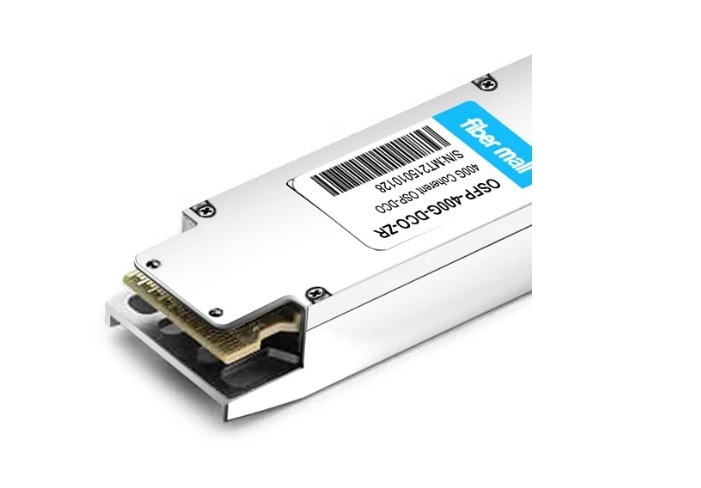
Improving Bandwidth and Data Transmission
Coherent optical transceivers play a vital role in network advancements as they offer the ability to greatly enhance bandwidth and data transmission. In the first place, this is achieved through the use of new modulation formats such as Quadrature Amplitude Modulation (QAM), which enables more bits to be sent per symbol, hence increasing the overall data rate. Secondly, these devices apply complex digital signal processing (DSP) methods that compensate for impairments like chromatic dispersion and polarization mode dispersion, thus ensuring good signal quality and integrity over long distances. Lastly, coherent technology supports flexible grid and wavelength division multiplexing (WDM), thereby allowing better utilization of the available spectrum while allowing networks to adapt dynamically to different bandwidth demands. Therefore, without a doubt, coherent optical transceivers are necessary for optimizing network performance considering exponential growth in data traffic.
How AI and Machine Learning Enhance Network Performance
To consider the following main points, we can talk about how AI and ML enhance network performance:
- Predictive Maintenance: Proactive maintenance is made possible by analyzing large amounts of network data using AI algorithms to predict potential failures and performance problems before they happen, thereby reducing downtime and enhancing overall network reliability.
- Traffic Management and Optimization: Based on historical data patterns as well as real-time network conditions, machine learning models are able to allocate bandwidth dynamically while adjusting traffic flows which ensures that resources are used optimally so that latency is minimized thus making users’ experience better.
- Security Enhancements: Compared with traditional methods, tools driven by artificial intelligence detect network security threats faster and more accurately. By finding out what is abnormal or likely indicative of a cyber attack through identifying unusual patterns or anomalies, damages can be mitigated while protecting the integrity of the networks involved.
- Quality of Service (QoS) Improvements: For different applications/services, AI, along with machine learning, analyzes then optimizes networks so that critical functions get enough resources for peak performance; this leads to uniformity in service delivery across the entire system since adjustments are made where necessary thus keeping up high levels of quality throughout all parts of a communication infrastructure.
These features clearly show why it is important for us to use AI as well as machine learning when modernizing our networks because they make them smarter but also safer while still being reliable.
How Does the Cisco Portfolio of Coherent Optical Transceivers Stand Out?
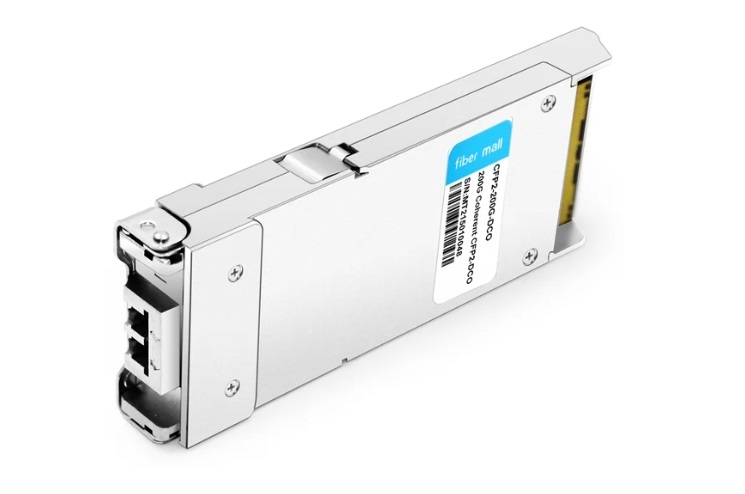
Exploring Cisco’s Range of Coherent Optical Transceivers
Cisco’s range of coherent optical transceivers is unique because they have a number of important features.
- High Performance and Flexibility: Cisco designed its transceivers to allow for high-speed data transfer rates that can go from 100G to 400G. They also work with different network configurations making them versatile enough for use in data centers, metropolitan networks or long haul transmission.
- Advanced Modulation Formats: By using advanced modulation formats like QPSK, 8-QAM, and 16-QAM, spectral efficiency will be optimized while network capacity improves through Cisco’s transceivers. These formats permit higher data rates over existing infrastructures, thereby maximizing the utilization of available bandwidths.
- Interoperability and Standards Compliance: To ensure easy integration with equipment from other vendors, Cisco makes its optical transceivers meet industry standards. This simplifies things during network upgrades or expansions since it eliminates most if not all interoperability problems between devices made by different manufacturers due to lack of adherence to common rules which define how those should communicate at various levels like physical connection up until application layer services provided by each one involved in such communication process.
- Energy Efficiency and Compact Design: In addition to being efficient in terms of power consumption (i.e., energy saving), these devices are also small-sized; hence, they occupy less space within networking equipment cabinets/racks, which allows for higher-density deployments, thus leading to better packing density whereby more ports could fit into the same area occupied before resulting into enhanced port-to-area ratio as well overall space utilization efficiency improvement within given rack space dimensions.
- Comprehensive Monitoring and Management: The fact that integrated diagnostics together with management tools are used means that real-time monitoring can be done on network performance besides fault detection becoming easier than ever before furthermore predictive maintenance feature becomes possible too due to availability such kind capability being embedded right there where it belongs i.e., within this particular device itself.
All these attributes demonstrate how Cisco strives to deliver state-of-the-art optical networking solutions that increase capacity, flexibility and operational efficiency.
Comparing Cisco with Other Industry Leaders
Several things need to be taken into consideration when you compare Cisco with other giants of the industry, such as Juniper Networks, Huawei, and Arista Networks.
Cisco vs. Juniper Networks: Cisco and Juniper Networks both offer strong networking solutions. One of Cisco’s strong points is its wide range of products, which also work across different platforms thanks to its comprehensive support and integration capabilities. Juniper, on the other hand, is known for simplicity, where they provide high-performance network devices, but also innovative routing solutions. The Junos OS by juniper has a simple interface with added automation capabilities which sets it apart from others.
Cisco vs. Huawei: Reliability, security features, and extensive customer support have made Cisco gain popularity as a leading network equipment provider alongside Huawei which is also a leader in this field; however, geopolitical concerns together with security problems surrounding Huawei have negatively impacted its reputation among consumers especially those living within regions that put more emphasis on safety than anything else. In addition to these standards, compliance ensures interoperability and ease of integration, thus giving an upper hand over competitors like Huawei, who mainly focus on cost-effectiveness coupled with a fast-paced innovation cycle.
Cisco vs. Arista Networks: When it comes to data center or cloud networking space arista networks becomes major player considering their software driven approach which uses Extensible Operating System (EOS) thereby enhancing scalability together with flexibility at all levels while still keeping performance intact. Nevertheless, cisco does not lag behind either since they too possess a broad set of products ranging from core networking up to iOT so as to match such capabilities brought forth by competing firms like Arista Networks; further advanced management tools as well security features are other areas where Cisco beats them hands down.
In conclusion every company has its own strengths but what makes cisco stand out is the fact that their product variety can suit any user’s needs coupled by reliable support system plus great integration ability which helps enterprises manage large scale sites easily.
Compatibility with Various Switch and Router Products
For the sake of smooth network integration and operation, it is necessary to be compatible with switches and router products. Cisco has designed its switches and routers for maximum interoperability, which supports a wide range of industry standards and protocols so that they can easily be integrated with equipment from other vendors, thus creating a versatile environment where different networks may flexibly operate. Moreover, Cisco provides many modular options that allow for customization according to the specific needs of a network.
Also known for their strong compatibility features are Juniper Networks which are made possible by Junos OS that supports various network protocols and services.It simplifies integration with other devices thereby reducing intricacy while improving operational efficiency especially in large organizations having numerous interconnected systems.Additionally, this open architecture system can seamlessly work with multi-vendor environments where different types of equipment need to communicate with each other without any hitches or limitations.
Arista Networks on the other hand bases its compatibility aspect around Extensible Operating System (EOS) which focuses on open standards, programmability as well automation.Their networking products are software driven thus making them capable of interworking efficiently with both hardware and software from other vendors so as to deliver scalable solutions designed for modern data centers together with cloud infrastructure.
To sum up the three companies namely Cisco, Juniper and Arista all share one thing in common; they prioritize compatibility among themselves along with wider scopes of network products.However, these firms achieve this goal through different methods such as use of proven operating systems coupled with adherence to open standards.This commitment makes it possible for enterprises to deploy diverse but integrated networks while at the same time ensuring optimal performance throughout.
What Are the Key Challenges and Benefits of Adopting Coherent Optical Transceivers?
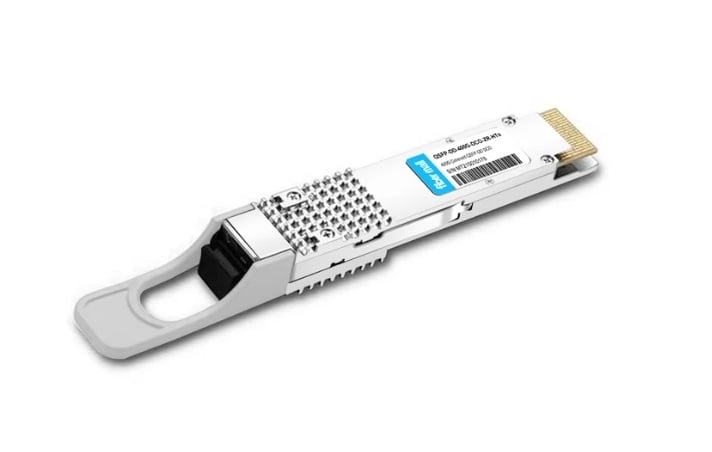
Challenges in Integrating Coherent Transceivers
Many difficulties come with integrating coherent optical transceivers into the current network infrastructure. The first challenge is that the cost of such technology is still very high; hence, many small businesses cannot afford it since they have limited budgets. Coherent transceivers are expensive not only at the point of purchase but also when it comes to operational and maintenance costs.
Secondly, complexity itself can be terrifying. Advanced signal processing and modulation formats require sophisticated knowledge in deployment and management staff for coherent transceivers. This means that training and staffing may need to be increased because of this specialized requirement.
Thirdly, interoperability problems can occur when you try to combine legacy network equipment with a coherent transceiver. It might not be easy to make new coherency technologies work well together with old infrastructures without adding extra hardware or software adjustments.
Lastly, there could be worries about how scalable these devices are going forward. Although they have an upper hand in terms of data transmission capacity and distance covered scalability up this technology so as meet demands of growing networks becomes complex and resource intensive thus should be taken into account considering these things will help us integrate them more easily while getting maximum benefits out if it too.
Benefits of High Bandwidth and Advanced Modulation Techniques
Optical communications with large bandwidth and highly developed modulation techniques are very advantageous as they greatly improve the performance of a network. Firstly, high bandwidth allows for the faster transmission of huge amounts of data thus meeting the need for data-heavy applications including 4K video streaming, cloud computing and IoT devices. This additional capacity makes it possible for more users to work simultaneously on the networks without degrading their performance.
Secondly, advanced modulation techniques like Quadrature Amplitude Modulation (QAM) and Phase-Shift Keying (PSK) optimize the utilization of available spectrum resources. They do this by making it possible to pack more information into optical signals, thus increasing network spectral efficiency. The higher spectral efficiency means that existing fiber infrastructure can be used better without necessarily having to upgrade at a great cost.
Finally, signal quality and reliability are improved when high bandwidth is combined with advanced modulation. These technologies achieve this by using sophisticated error correction algorithms as well as signal processing which in turn reduce noise and dispersion effects during long distance data transmission. As a result, networks become stronger while at the same time being able to support mission critical applications with less downtime required for maintenance purposes.
Future Prospects of Coherent Transceivers
Optical communication technologies are continuously advancing, which makes the future of coherent transceivers look bright. Coherent transceivers use both amplitude and phase information of the light signal, which is why they are considered a key player in next-generation high-capacity networks. According to leading industry trends and studies, coherent technology will go beyond traditional long-haul applications to metro and data center interconnects, thereby allowing for more flexible and scalable network designs.
Additionally, such as higher-order modulation schemes, machine learning-assisted signal processing, or even enhanced digital signal processors (DSPs), among others, could enhance performance levels for these devices. So far so good because it means that they will handle higher data rates while improving signal integrity besides reducing power consumption at the same time. Also, integrating photonic integrated circuits (PICs) into coherent transceivers will drive down costs, thus making them small enough for widespread use.
In summary, therefore, my conclusion is that with their ability to ensure reliability and efficiency throughout different periods where exponential increases occur in data traffic volumes, high-speed optical communications networks can be realized through coherent transceivers.
Frequently Asked Questions (FAQs)
Q: What are coherent optical transceivers and how do they work in the context of modern networks?
A: Coherent optical transceivers are devices for advanced optical communication. They use coherent detection technologies such as lasers to send data signals over fiber networks. These transceivers are necessary for large-scale data transfer and allow huge amounts of information to be sent over both short and long distances with little loss or disturbance.
Q: What advantages does using tunable coherent optical transceivers in metro networks provide?
A: Tunable coherent optical transceivers have multiple benefits in metro networks. The ability for the transceiver to change its wavelength provides flexibility which reduces extensive spare parts inventory required by the network. This tunability therefore improves network adaptability and supports high-performance connectivity demands driven by dynamic enterprises access applications or telecoms among others.
Q: How do 100G and 200G coherent transceivers compare to 400ZR and openZR?
A: 100G & 200G coherent transceivers were created with less complex modulation formats since they’re designed for high-capacity data transport at shorter distances, thus making them ideal for less demanding applications too, unlike their counterparts; this is same as saying that while some people may need more power (high demand), others might just want something simple but reliable enough so if those two were compared side by side then there would be no match between them because what one can offer in terms of speed another will compensate through efficiency, especially in situations where long hauls become necessary like when connecting different data centers within city limits etcetera.
Q: What role do pluggable coherent transceivers play within data centers?
A: Pluggable coherent transceivers enable easy deployment and efficient scalability hence their importance within Data Centers; also known as DCs or simply ‘centers’. They support high-capacity data transport while offering a compact form factor, thus enabling these centers’ ability to handle more data as demands increase but still maintain operational efficiency and cut down on costs.
Q: How does Juniper utilize coherent optical transceivers in its network solutions?
A: Juniper uses coherent optical transceiver technology as part of its network solutions so as to provide performance-driven reliability during data transmission processes. It is through the use of advanced coherency that these telecomms solutions become possible at juniper; which ensures best-in-class interoperability between various networks while guaranteeing high data throughput in mobile networks among other areas having such requirements.
Q: Why should telecom applications in enterprise environments use coherent devices?
A: Coherent devices help telecom applications in enterprise environments by making it possible for them to carry large amounts of data over long distances at high speed. Moreover, these tools allow the transmission of heavy information through networks with low latency and high dependability.
Q: What is the importance of interoperability in coherent optical transceivers and how is it achieved?
A: In coherent optical transceivers, interoperability is important because it enables them to work with different vendors’ networking equipment as well as other network components seamlessly. This can be done by following industry standards that have been set by organizations like OIF (Optical Internetworking Forum) that define parameters for compatibility and performance, thus ensuring the widest range of products can operate together within a given network.
Q: What impact do coherent transceivers have on modern 800G high-performance networks?
A: Without coherent transceivers, there would be no growth for 800G high-performance networks. These devices enable efficient transportation of huge volumes of data across wide distances, which meets the need for faster connectivity in metro networks or large-scale data centers. Therefore, this makes it possible to create next-generation networking infrastructure that can support today’s digital world’s ever-increasing demands for more information-sharing capacity.
Q: How does using coherent optical transceivers affect the operational costs associated with network infrastructure?
A: The adoption of coherent optical transceivers reduces operational costs through increased efficiency in transporting data and decreased need for massive investments into infrastructure. Additionally, these types of transceivers are tunable, hence allowing better management of networks; they also perform highly, therefore requiring fewer spares, leading to lower maintenance efforts, all of which translate into cost savings for operators running telecommunication networks.
Related Products:
-
 QSFP-DD-400G-DCO-ZR+-HTx 400G Coherent High TX Power QSFP-DD DCO OpenZR+ C-band Tunable Optical Transceiver Module
$7000.00
QSFP-DD-400G-DCO-ZR+-HTx 400G Coherent High TX Power QSFP-DD DCO OpenZR+ C-band Tunable Optical Transceiver Module
$7000.00
-
 QSFP-DD-400G-DCO-ZR-HTx 400G Coherent High TX Power QSFP-DD DCO ZR C-band Tunable Optical Transceiver Module
$6500.00
QSFP-DD-400G-DCO-ZR-HTx 400G Coherent High TX Power QSFP-DD DCO ZR C-band Tunable Optical Transceiver Module
$6500.00
-
 QSFP28-100G-DCO-ZR 100G Coherent QSFP28 DCO C-band Tunable Optical Transceiver Module
$3600.00
QSFP28-100G-DCO-ZR 100G Coherent QSFP28 DCO C-band Tunable Optical Transceiver Module
$3600.00
-
 OSFP-400G-DCO-ZR+ 400G Coherent OSFP-DCO ZR+ C-band Tunable Optical Transceiver Module
$7000.00
OSFP-400G-DCO-ZR+ 400G Coherent OSFP-DCO ZR+ C-band Tunable Optical Transceiver Module
$7000.00
-
 QSFP-DD-400G-DCO-ZR+ 400G Coherent QSFP-DD DCO C-band Tunable Optical Transceiver Module
$6500.00
QSFP-DD-400G-DCO-ZR+ 400G Coherent QSFP-DD DCO C-band Tunable Optical Transceiver Module
$6500.00
-
 QSFP-DD-400G-DCO-ZR 400G Coherent QSFP-DD DCO C-band Tunable Optical Transceiver Module
$6000.00
QSFP-DD-400G-DCO-ZR 400G Coherent QSFP-DD DCO C-band Tunable Optical Transceiver Module
$6000.00
-
 QSFP-DD-100G-DCO 100G Coherent QSFP-DD DCO C-band Tunable Optical Transceiver Module
$5500.00
QSFP-DD-100G-DCO 100G Coherent QSFP-DD DCO C-band Tunable Optical Transceiver Module
$5500.00
-
 OSFP-400G-DCO-ZR 400G Coherent OSFP-DCO ZR C-band Tunable Optical Transceiver Module
$7000.00
OSFP-400G-DCO-ZR 400G Coherent OSFP-DCO ZR C-band Tunable Optical Transceiver Module
$7000.00
-
 OSFP-100G-DCO 100G Coherent OSFP-DCO C-band Tunable Optical Transceiver Module
$6500.00
OSFP-100G-DCO 100G Coherent OSFP-DCO C-band Tunable Optical Transceiver Module
$6500.00
-
 CFP2-400G-DCO 400G Coherent CFP2-DCO C-band Tunable Optical Transceiver Module
$6500.00
CFP2-400G-DCO 400G Coherent CFP2-DCO C-band Tunable Optical Transceiver Module
$6500.00
-
 CFP2-200G-DCO 200G Coherent CFP2-DCO C-band Tunable Optical Transceiver Module
$6500.00
CFP2-200G-DCO 200G Coherent CFP2-DCO C-band Tunable Optical Transceiver Module
$6500.00
-
 CFP-200G-DCO 200G Coherent CFP-DCO C-band Tunable Optical Transceiver Module
$6000.00
CFP-200G-DCO 200G Coherent CFP-DCO C-band Tunable Optical Transceiver Module
$6000.00

